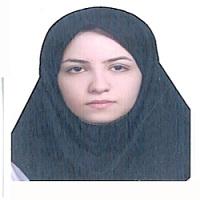Control of an Anthropomorphic Prosthetic Hand Using EMG Signals - دانشکده فنی و مهندسی
Control of an Anthropomorphic Prosthetic Hand Using EMG Signals

نوع: Type: thesis
مقطع: Segment: masters
عنوان: Title: Control of an Anthropomorphic Prosthetic Hand Using EMG Signals
ارائه دهنده: Provider: Mahsa Barfi
اساتید راهنما: Supervisors: Hamidreza Karami (Ph.D) - Manouchehr Hosseini Pilangorgi (Ph.D)
اساتید مشاور: Advisory Professors: Nader Farahpour (Ph.D) - Mohammad Amin Ghasemi (Ph.D)
اساتید ممتحن یا داور: Examining professors or referees:
زمان و تاریخ ارائه: Time and date of presentation: Summer 2020
مکان ارائه: Place of presentation:
چکیده: Abstract: In the development of robotic or prosthetic limbs, the goal is to maximize the similarity between the movements compared to the human hand with the help of EMG signal analysis and the development of a suitable model and controller. Each human finger has three joints, and a two-degree-of-freedom model can be considered for wrist movements. Therefore, in this study, a small robot with three degrees of freedom has been considered for modeling each of the fingers, and the movements of the fingers have been modeled with five robots of three degrees of freedom. A two-degree-of-freedom robot is also dedicated to modeling wrist movements. Therefore, in this study, using six independent robots, human hand movements have been modeled. In this study, the EMG data collection method, the characteristics that are extracted from it, and the basics of modeling and control are discussed, then the equations and the dynamic and kinematic relations of the three-dimensional robot are described. Freedom deals with the development of the human hand model, simulating and controlling it, and adapting its behavior to the behavior of the EMG signal. The proposed control method in this study is a fuzzy-PI adaptive controller that is trained based on a fuzzy-neural network. Comparison and analysis of EMG signals and simulation data indicate the ability of modeling to track natural human hand behavior. The proposed controller with the proposed model has resulted in more adaptation of the behavior of the artificial hand and the human hand, and its metaphor in tracking the commands has reached about zero. At the same time, the specifications of the time response, such as the sitting time and the permanent error, have been significantly improved. Therefore, the result of this research is the artificial hand model with wrist with fuzzy-PI controller, which results in proper tracking of the reference signal, appropriate response speed and less permeability and error of the permanent mode compared to the conventional PI controller and adaptation to working conditions and movements. Different due to the use of fuzzy system.
فایل: ّFile: Download فایل
